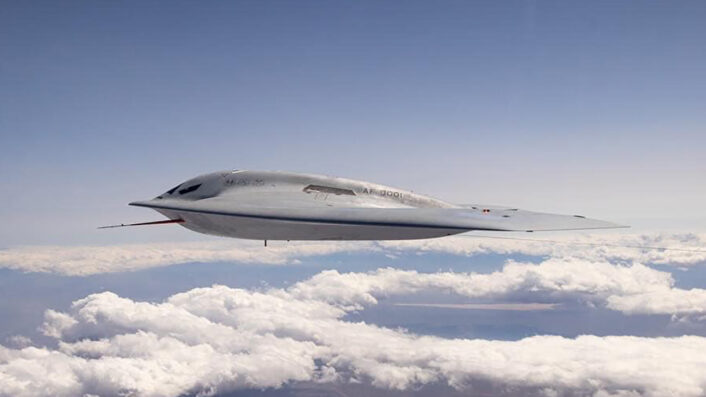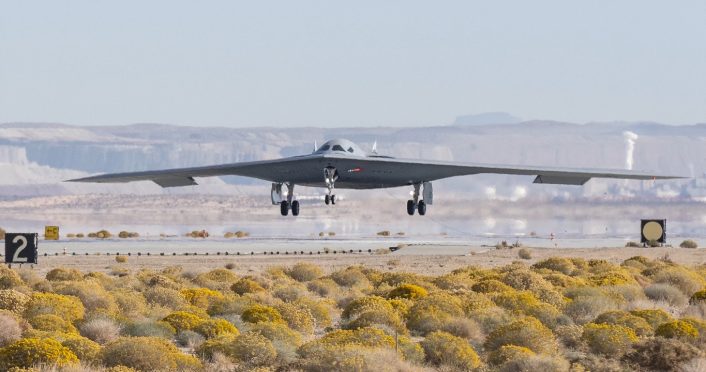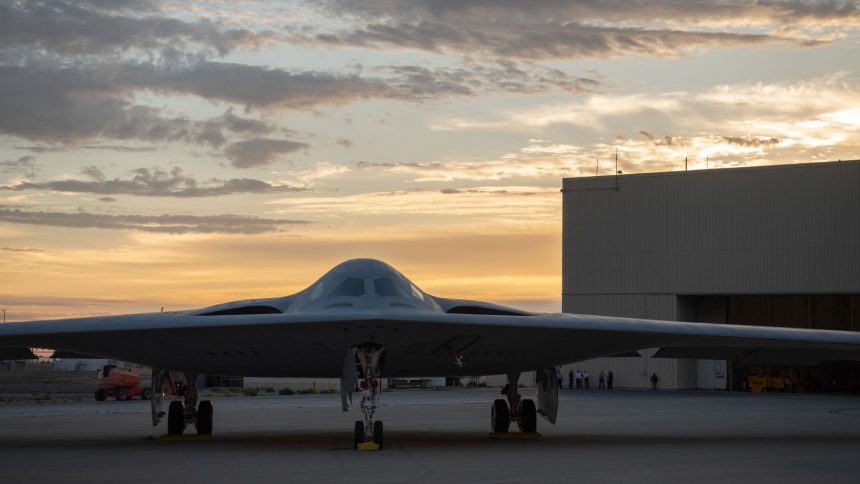In addition to the Fuel Cell Hangar, the company is presently constructing four other facilities in support of the B-21 Raider at Ellsworth AFB. These include a Radio Frequency Hangar, Weapons Loader Training Facility, the Fuel Systems Maintenance Dock and a Phase Maintenance Hangar.
Ellsworth Air Force Base, South Dakota, is rapidly gearing up to host the B-21 Raider stealth bomber with special infrastructure as the type’s first operational base. Conti Federal was awarded a contract worth $31.7 million to renovate and convert an existing maintenance hangar, called Dock 81, into a Fuel Cell Hangar, whose new name will be Fuel Cell Hangar B7242.
The contract awarded by the USACE (U.S. Army Corps of Engineers) requires transforming approximately 26,000 square feet, with a bay for a single aircraft, maintenance storage areas, service utility rooms and a corridor connecting the hangar to an adjacent Fuel Systems Maintenance Dock, also being constructed by Conti. The project is expected to be completed by Nov. 2026.
The company is presently constructing four other facilities in support of the B-21 Raider at Ellsworth AFB. These include a Radio Frequency Hangar, Weapons Loader Training Facility, the Fuel Systems Maintenance Dock (mentioned above) and a Phase Maintenance Hangar. The scale and variety of the ground support facilities demonstrates the sophistication and complexity of the cutting edge bomber.
“This is our fifth project in support of the B-21 bed down programme at Ellsworth AFB,” said Conti Federal US operations vice-president Ryan Kanzleiter. “While aircraft hangars are uniquely tailored to each installation, we have the know-how and expertise to support this project. This award creates construction efficiencies with our adjacent Fuels Systems Maintenance Dock project and provides critical mission readiness for the U.S. Air Force.”
The U.S. Air Force released new photos of the B-21 Raider bomber, including one from a higher angle.
(Click to enlarge photos) pic.twitter.com/WWDt4Pps4L
— Bizjets of War (@bizjetsofwar) March 7, 2023
Reshuffling owing to the B-21 Raider
Ellsworth was selected as the first B-21 Raider base after it cleared an EIA (Environmental Impact Assessment) report in 2021. Whiteman and Dyess AFBs in Texas and Missouri have been designated as the B-21 Raiders second and third MOBs (Main Operating Bases), respectively, in mid-September 2024.
Moreover, owing to runway expansion work at Ellsworth AFB to support B-21 Raider operations, the B-1B Lancer bombers based there are also likely to temporarily move to Grand Forks AFB, North Dakota, a decision that, however, has yet to be finalized. The temporary move would last ten months, starting in February 2025, and will see 800 Airmen move along the bombers to the former B-1B base for maintenance and operations’ support.
The B-21 is expected to replace the B-1B Lancer and B-2A Spirit aircraft as the U.S. Air Force’s leading long-range stealth, EW and integrated air defense jamming-capable conventional and non-conventional strategic strike platform. Ellsworth will construct or renovate more than 20 major facilities before the B-21’s arrival, with works completed between 2025 and 2026.

Other construction work
Conti was awarded the Fuel Systems Maintenance Dock contract in April 2024 at a cost of $63.1 million for the 39,000 sq ft facility, which included a single aircraft measurement bay and all associated back shop, administrative and facility support spaces. The $70.5 million RF Hangar, whose contract was awarded in April 2023, is a 64,500 sq ft space that includes “a space or spaces constructed to secure area standard Intelligence Community Directive/Intelligence Community Standard 705 (ICD/ICS 705).”
So here it is💥💥
The world’s first 6th gen aircraft
“The B-21 Raider will be a dual-capable, penetrating-strike stealth bomber capable of delivering both conventional and nuclear munitions. The B-21 will form backbone of USAF bomber force consisting of B-21s and B-52s” pic.twitter.com/G8fEqrRSp8
— Vayu Aerospace Review (@ReviewVayu) December 3, 2022
The Weapons Loader Training Facility that Conti was contracted for in Sep. 2023 is a $43 million project, requiring the renovation of the U.S. Air Force’s Pride Hangar. It was originally built to house B-36 aircraft and now hosts state-of-the-art Weapons Loader Training (WLT) bays. “This newly designed space will house mock-ups of an aircraft fuselage, facilitating advanced training activities related to weapons loading,” says the company.
Ammunition loading drills are vital in refining ground crews proficiency with removing, transporting and loading/attaching ordnance on hardpoints or internal bays. This is to practice the logistical aspects of sudden, unexpected deployments requiring bombing missions and/or force generation. These drills have been figuring even more prominently recently with the B-1s and the B-52s as the Air Force reorients towards conventional wars with peer rivals Russia and China.

Fuel cells in B-21
Except for videos/pictures of the B-21 Raider that have appeared unofficially, officially and statements by Northrop Grumman and the USAF that vaguely mention the strategic technologies in the bomber’s development and its tactical orientation, little to no information is available regarding its sensors, radar, components and power systems.
The announcement about the contract for the Fuel Cell Hangar, however, reveals the highly prized technology being incorporated into the bomber, possibly to provide massive electricity for its sophisticated electronics enabling the cross-domain data processing and sensor fusion systems.
Northrop has described the B-21 as a “survivable” aircraft that achieves its mission “through integration of data, sensors, weapons, stealth, information advantage” and “networking across the battlespace to multiple systems.” This suggests an ability to detect electromagnetic emissions and break through enemy integrated air defenses and conduct standoff strikes.
Unifying and combining data from its own sensors and other assets into a single operational picture requires tremendous computing power and equally massive power sources. From a purely engineering standpoint, it can be assumed that relying on the power generated purely by the engines might be insufficient, thus the fuel cells. The contract announcement has inadvertently offered a glimpse into the exponentially advanced and sophisticated piece of technology that the B-21 Raider is.









